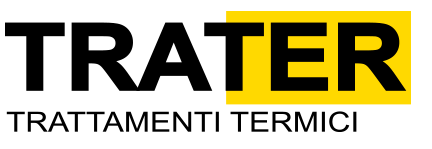To insert with interference shafts into pulleys, cams or gear wheels, one solution is to thermally expand the hole seat and perform the coupling using the shrink fit operation.
The same process can be applied, for example, to linings to be fitted with interference onto other bodies. When the components to be assembled are big, geometrically complex as well as delicate and difficult to heat in the workshop with torches or other means, we recommend our customers to perform hot shrink fitting, carried out in an oven, completely under control.
The same process can be applied, for example, to linings to be fitted with interference onto other bodies. When the components to be assembled are big, geometrically complex as well as delicate and difficult to heat in the workshop with torches or other means, we recommend our customers to perform hot shrink fitting, carried out in an oven, completely under control.
In the case of hot insertion of shafts into gears, it is essential that the latter heat up uniformly, up to the core, to ensure that the entire shaft passes completely through the hole, without jamming in correspondence with the colder, less expanded areas.
To do this, very performing ovens and accurate temperature control through an adequate number of thermocouples positioned directly in contact with the most massive parts, shielded from the air of the oven, are essential. All measured points of the item must stably maintain the temperature required for shrink fitting for at least two hours before the operation, depending on the mass of the product.
The heating rates must be determined based on the thicknesses geometry of the gears and, generally, slow to be sure of the success of the delicate operation of inserting the shaft. In shrink fittings, the damage that would be caused if the shaft is not completely inserted into its seat, with the impossibility, in most cases, of being able to extract it from the incorrect position assumed except for mechanics processing, must never be underestimated. It is therefore essential to carefully study the item, before heating it, in relation to its geometry, dimensions and weight; the interference between the two parts must also be carefully evaluated and, by the manufacturer, verified with suitable instruments.
Trater has decades of specific experience for this type of work and counts dozens and dozens of hot shrink fits of items of the most varied geometries and weights. Hot shrink fitting is a simple, fast, controllable, economical operation and does not require the particular authorizations necessary for cold (cryogenic) shrink fitting, for the installation of the specific systems.
To do this, very performing ovens and accurate temperature control through an adequate number of thermocouples positioned directly in contact with the most massive parts, shielded from the air of the oven, are essential. All measured points of the item must stably maintain the temperature required for shrink fitting for at least two hours before the operation, depending on the mass of the product.
The heating rates must be determined based on the thicknesses geometry of the gears and, generally, slow to be sure of the success of the delicate operation of inserting the shaft. In shrink fittings, the damage that would be caused if the shaft is not completely inserted into its seat, with the impossibility, in most cases, of being able to extract it from the incorrect position assumed except for mechanics processing, must never be underestimated. It is therefore essential to carefully study the item, before heating it, in relation to its geometry, dimensions and weight; the interference between the two parts must also be carefully evaluated and, by the manufacturer, verified with suitable instruments.
Trater has decades of specific experience for this type of work and counts dozens and dozens of hot shrink fits of items of the most varied geometries and weights. Hot shrink fitting is a simple, fast, controllable, economical operation and does not require the particular authorizations necessary for cold (cryogenic) shrink fitting, for the installation of the specific systems.
Would you like to receive further information?
The shrink fit temperature must be as high as possible, with the following warnings:
the temperatures of possible quenching and tempering and tempering of the materials constituting the two bodies to be shrink fitted cannot be exceeded, otherwise there is loss of mechanical characteristics;
it is not necessary to dilate the holes beyond the diameter of the supporting shoulders on the shaft, to avoid running the risk of inserting the shaft too much.
In the case of conical interferences it is necessary to install spacers to stop the wheel exactly at the intended shrink fit point.
To calculate the expansion on the wheels or linings, please use the following formula:
- Expansion = Internal diameter [mm] x 0.000012/°C x temperature difference between the two bodies [°C].
- In the case of stainless steel products the expansion coefficient is 0.000016/°C.
- In the case of aluminum jackets, however, it is 0.000024/°C.
- Possible keys must be fixed to the shafts (with silicone glues, for example) so that they do not move or fall during hot insertion.
The customer, always invited to attend the shrink fit operations, must provide the drawings of how the item must be assembled and, as previously mentioned, has to be certain of the interferences, to prevent the shaft from getting stuck.

